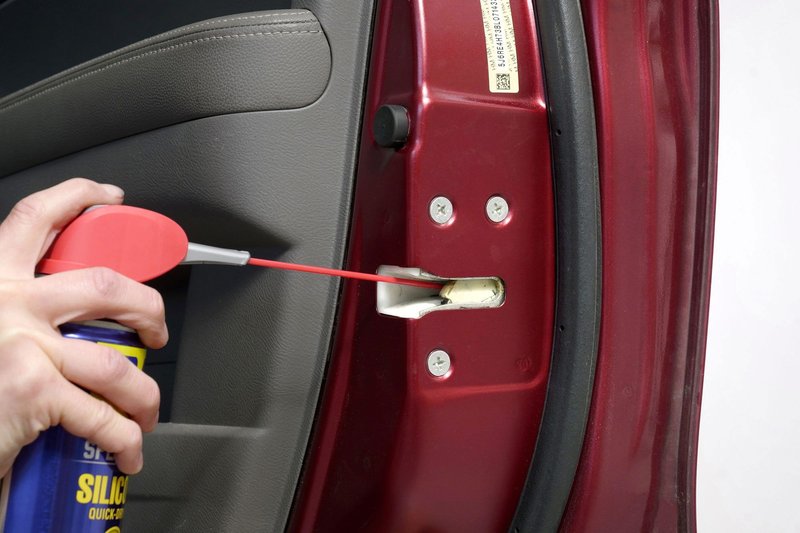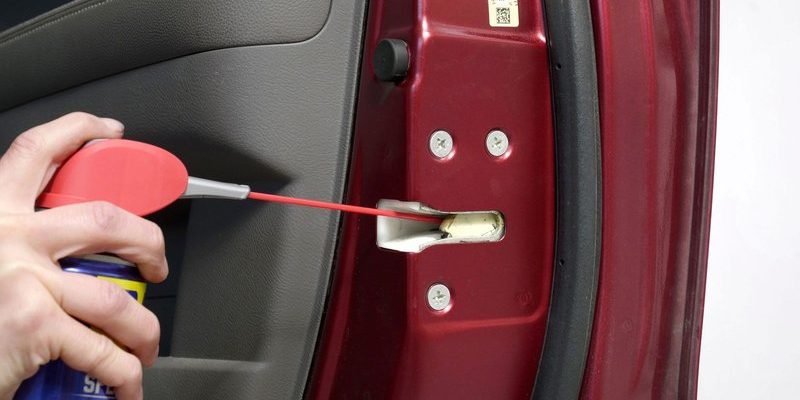
Imagine you’re at a heavy entrance door, ready to push it open, and instead of gliding smoothly, it groans and creaks like an old ship. Not the best welcome, right? That’s where the application of grease to door hardware bearings comes into play. Just like how a bit of oil can keep a car’s engine running smoothly, correctly applying grease to your door’s hardware can make a world of difference. It’s all about maintenance, and it doesn’t have to be complicated.
Let’s dive into the nuts and bolts of this topic. Whether you’re dealing with commercial doors or your home’s main entrance, understanding how to grease those bearings properly will save you from irritation in the long run, not to mention prevent wear and tear. Think of it as giving your door a little TLC—it’s an easy task that goes a long way.
Why Greasing Door Hardware Bearings Matters
You might be wondering, why is greasing door hardware bearings so essential? Well, let’s break it down. Bearings are designed to help doors swing open and close smoothly, reducing friction. Without proper lubrication, they can wear down quickly, leading to much bigger issues, like misalignment or complete failure. Imagine trying to use a rusty hinge—pretty much a nightmare, right?
Applying grease not only keeps your door functional, but it also extends the lifespan of the hardware. This means fewer repairs and more peace of mind. Think of it like flossing, only for your door—taking care of the small stuff prevents bigger problems later on. If you’ve ever noticed squeaking or sticking doors, that’s a clear sign that it’s time to roll up your sleeves and get to work.
Choosing the Right Grease
When it comes to greasing door hardware bearings, not all grease is created equal. You’ll need to pick a grease that matches your specific hardware needs. For most door bearings, a good-quality lithium-based or silicone grease works wonders. Lithium grease is great because it’s versatile and can handle high pressure, while silicone grease is perfect for a smoother application and doesn’t attract dirt.
Here’s the thing: using the wrong type of grease can lead to sticky situations—literally. Some greases can break down over time or even gum up the works. So, pay attention to what your door’s manufacturer recommends. If you’re unsure, a quick trip to your local hardware store or even a chat with the staff can help you pick the perfect product.
Preparing the Surface for Greasing
Before you start greasing those bearings, you need to prepare the surface. This ensures that the grease adheres properly and does its job. Start by removing any old grease or grime using a clean cloth. A bit of lubricant cleaner can help dissolve stubborn residue.
Once the surface is clean, inspect the bearings for any signs of damage. Cracks or excessive wear can indicate it’s time for a replacement rather than just a grease application. If everything looks good, you’re ready to apply grease.
How to Apply Grease to Door Hardware Bearings
Now for the fun part: applying the grease! Here’s a simple step-by-step process:
- Step 1: Use a small brush or your fingers (wear gloves if you like) to apply a thin layer of grease.
- Step 2: Focus on the bearing surfaces, ensuring you cover all areas evenly.
- Step 3: If your door has a grease fitting, use a grease gun to apply the grease until you see it oozing out slightly. This means the bearing is adequately lubricated.
- Step 4: Wipe away any excess grease that may have squeezed out.
It’s as easy as that! Just make sure not to overdo it—too much grease can lead to a mess and attract dirt instead of repelling it. Think of it like putting on lotion; a little goes a long way.
Frequency of Greasing
So, how often should you grease your door hardware bearings? It depends on a few factors, like usage and environment. For doors that see a lot of traffic, consider greasing them every six months. However, if it’s a door that’s used less often, once a year might suffice. Honestly, it’s a good idea to check them during seasonal maintenance or whenever you notice any squeaking sounds.
Keep an eye on the performance. If the door starts to feel heavy or begins to make noises, that’s a sign it’s time for a grease refresh. Regular maintenance will keep your door hardware in top shape and avoid those frustrating door jams.
Common Mistakes to Avoid
Even the best intentions can lead to mistakes. Here are a few common pitfalls to steer clear of:
- Overgreasing: That extra dollop of grease won’t make your door glide better—in fact, it can backfire.
- Ignoring Cleanliness: Always clean the surface before applying new grease. Old grime can hinder performance.
- Using the Wrong Grease: Check the manufacturer’s recommendations before applying grease. This is critical for ensuring compatibility.
Avoiding these mistakes will keep your door functioning smoothly and extend the life of your hardware. Think of it as preventing a headache—you won’t regret it!
Closing Thoughts
Applying grease to your door hardware bearings is a simple task that can have a huge impact on the lifespan and performance of your doors. It’s like a little routine pampering for a part of your home that often goes unnoticed. With the right grease, proper application, and regular maintenance, you’ll ensure that every door opens and closes with ease.
So grab that grease, take a moment to care for your doors, and enjoy the smooth operation that follows. You might just find yourself giving those entrances a proud little pat every time you walk through them!
